
MENUMENU
TALK TO AN EXPERT
Special Hours: 7AM – 6PM PST
TALK TO AN EXPERT
Special Hours: 7AM – 6PM PST
You want a beefy and capable overland battery bank to maximize your time adventuring. However, you can’t just put it anywhere in your overlanding vehicle. You want to find the best spot to keep it safe and secure during your adventures. So, where should you put your overland battery bank? Let’s look and see!
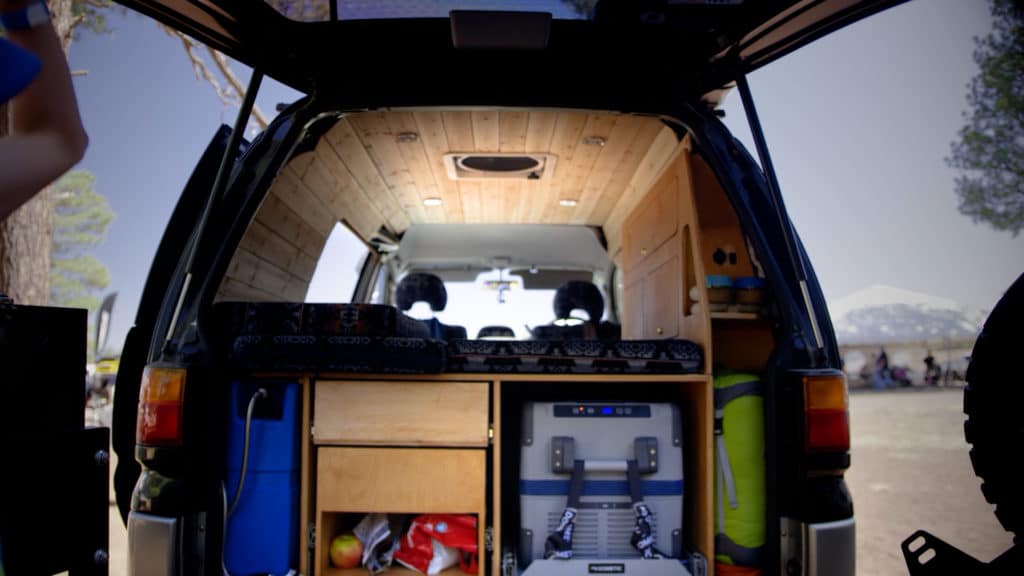
Just because you’re overlanding doesn’t mean you have to rough it. You can use an overland battery bank to power things like lights, radios, and other overlanding gear. These battery banks can also allow you to bring luxury items like TVs, internet, and other accessories that plug into electrical outlets or need to stay charged.
When it comes to the best battery for overlanding, it’s hard to beat our lithium-ion batteries. These are the best because they’re lighter, are more energy dense, and don’t require venting. If you’re building a battery bank with multiple batteries, you can easily save 100+ pounds while getting twice the power of standard lead-acid batteries.
In addition to their performance, there’s more flexibility when installing lithium-ion batteries. You can install them on their side, upside down, or in various configurations. This can help you avoid wasting the limited space in your overland rig.
Lithium batteries have many other benefits, but one huge benefit is their lifespan. While other batteries may last a few years before they reach the end of their life, lithium-ion batteries can last for 10+ years when used and cared for properly. So while they may cost more upfront, they’re one of the most cost-effective options in the long run.
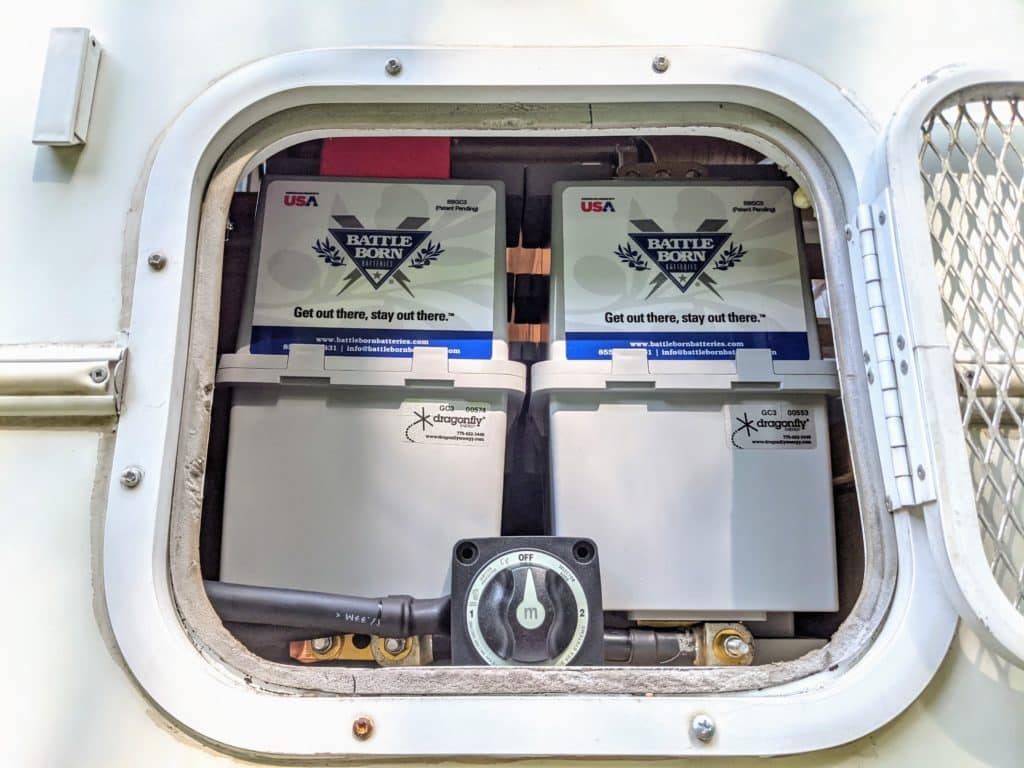
Determining how much battery you need for overlanding can be a complicated question. You need to consider your three major limitations before you even begin: Cost, Weight, and Space. Any of these limitations may dictate the size of your system. However, if they do not you need to do an energy audit.
This involves looking at how much energy your appliances use and estimating how much you’ll use them. Once you know how many watts you’re using, multiply that by hours to get a watt-hour calculation. Then take this calculation and determine your run time, assuming our 100 amp batteries can produce 1300 watt-hours.
Remember that you don’t have to power everything for your entire journey with a battery. Overlanders often use solar panels, generators, and even vehicles to recharge their battery banks. The battery is however the heart of the system and the part that should never stop even when generation is halted.
Once you’ve done your energy audit, you can begin calculating how many batteries you need for overlanding. The larger the battery bank, the longer you’ll be able to spend without worrying about charging but most choose a 24-hour run time.
When you’re trying to decide where you should put your overland battery bank, there are several essential factors that you must consider. Let’s look at each so you can have the best possible setup to protect your battery bank and enjoy it for years to come.
One important decision you need to make when installing an overlanding battery bank is where you’ll install the batteries. Since lithium-ion batteries do not require venting, installing them inside your vehicle is safe. This helps keep your batteries secure and in a safe operating environment, especially if you plan to overland during winter.

If you’re creating a battery bank that requires venting or are uncomfortable installing your batteries inside, you can store them outside. This typically involves a rack mounted outside the vehicle or in the bed of an overland truck.
When done correctly, both are excellent setups. However, many overlanders like the peace and comfort of knowing their battery bank is safe inside.
Most of our lithium overland battery banks require minimal maintenance when installed properly. However, making them accessible enough if needed to get at in an emergency is a good idea.
Charging is an integral part of a battery bank. You’ll frequently have a dead battery bank if you fail to charge. When placing your overland battery bank, consider how you plan to charge it.
Some of the most common options for charging are through the vehicle’s alternator, solar panels, and shore power like generators or at a campsite. How you plan to charge your batteries will determine what equipment you’ll need for your battery bank.
If you plan to use solar panels, you’ll need additional room for an MPPT and the cabling to connect it to your battery bank. Lithium batteries can accept more power than other batteries, so you may need to beef up your charger to get the fastest charging possible.
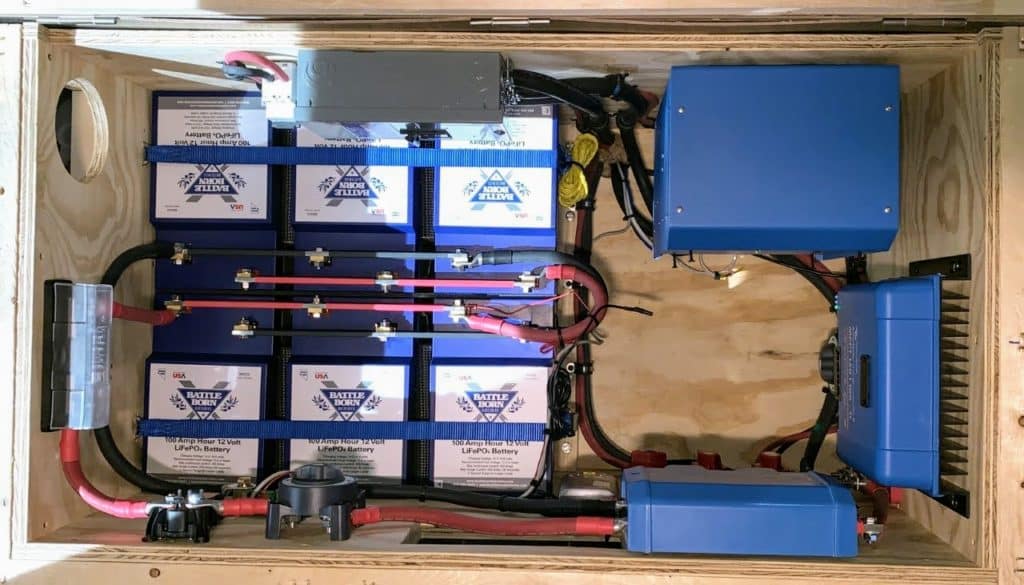
Depending on your overland battery bank size, it can be pretty heavy. The weight must be evenly distributed throughout your vehicle when overlanding. Balance it as much as possible from front to back and side to side. Placing too much weight on one side of the vehicle can cause increased wear and tear on the heavier side and stability issues.
When placing your battery bank, avoid placing it too high. Having weight too high throws off the center of gravity and increases the chances of a vehicle rolling over when navigating sharp turns or rough road conditions. Keep your batteries as low as possible in your vehicle to help keep the weight as close to the ground as possible.
The various components of an overland battery bank will connect via wiring. How much and the wiring sizes will vary based on the load they’ll carry and the length. When deciding where to place your battery bank, factor this in. If you don’t, you could need larger and longer cabling, which can exponentially increase your costs.
You must have the proper wiring for your overland battery bank. Failure to do so could create a dangerous situation for you and your future overlanding adventures.
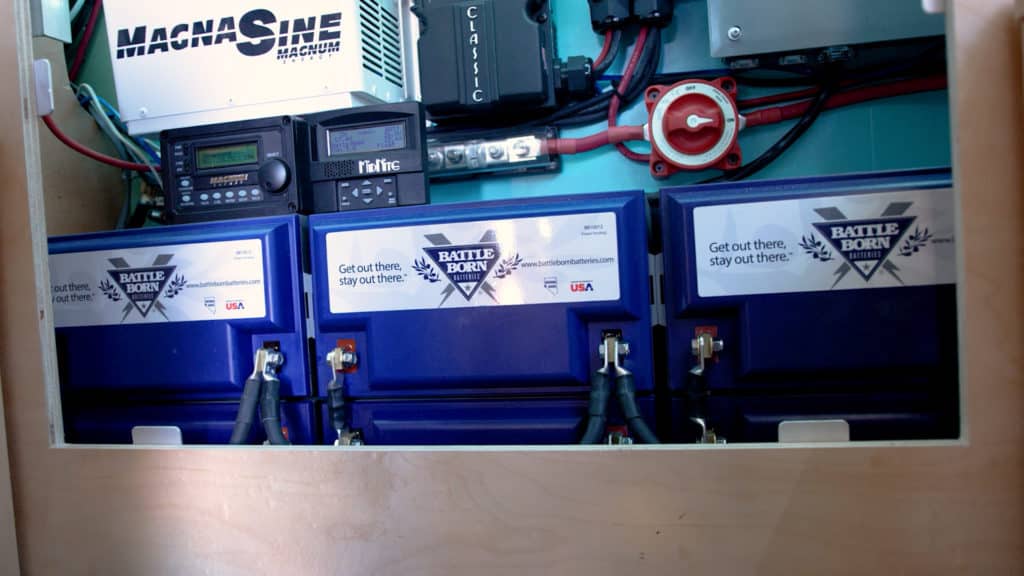
There are some common locations for installing overlanding battery banks. Let’s look at some examples of the most common locations to find which might work best for your overlanding vehicle.
Many people build a special cabinet to house batteries. Not only does this keep them safe and out of sight, but it also makes them easily accessible. Bound For Nowhere provides an excellent example of this setup while giving a tour of their rig. They can easily access their batteries in their cabinet should they need to adjust them.
Remember that this is only possible because they have lithium batteries that don’t require venting. It’s possible to do this same setup with lead-acid batteries, but you’ll need to cut a hole in the cabinet to allow the batteries to vent gasses outside the vehicle.
Many overlanding vehicles have a tremendous amount of storage under the bed, which can be an excellent spot for a large battery bank. However, because of the potential fire risks, you should only attempt this setup with lithium batteries. Lithium batteries are incredibly safe for this type of storage and use.
One of the best examples of this type of storage option is Living the Van Life’s setup. You can see his massive battery bank that sits under his bed. This battery bank can meet all his needs and help him power and charge his equipment while on overlanding adventures.
Because lithium-ion batteries have flexibility in positioning, you can safely store them practically anywhere in a vehicle. This is particularly helpful for SUVs and conversion vans.
StrangerPalooza’s video shows how you can maximize space by placing batteries toward the rear doors. The setup he walks through has them under the bench seating area.
If you plan to enjoy overlanding, you don’t want just any lithium batteries for your battery bank; you want the best. Our Battle Born Batteries are some of the best on the market.
Because they’re lightweight, you don’t have to worry about them weighing down your overlanding vehicle. However, despite their reduced weight, they charge twice, have a deeper depth of discharge, and pack twice as much power as standard lead-acid batteries.
Battle Born Batteries will power and help you keep your electronics charged for years of overlanding adventures. They even come with a 10-year warranty against manufacturer defects.
You’ll make many important decisions while overlanding, including where you’ll put your battery bank. Don’t feel pressured to make this decision quickly. First, get a good understanding of the pros and cons of each option before making a decision. If not, you could put a ton of work and money into a project that doesn’t meet your needs. So, where will you put your overland battery bank?
We know that building or upgrading an electrical system can be overwhelming, so we’re here to help. Our Reno, Nevada-based sales and customer service team is standing by at (855) 292-2831 to take your questions!
Also, join us on Facebook, Instagram, and YouTube to learn more about how lithium battery systems can power your lifestyle, see how others have built their systems, and gain the confidence to get out there and stay out there.
Shop Best Sellers

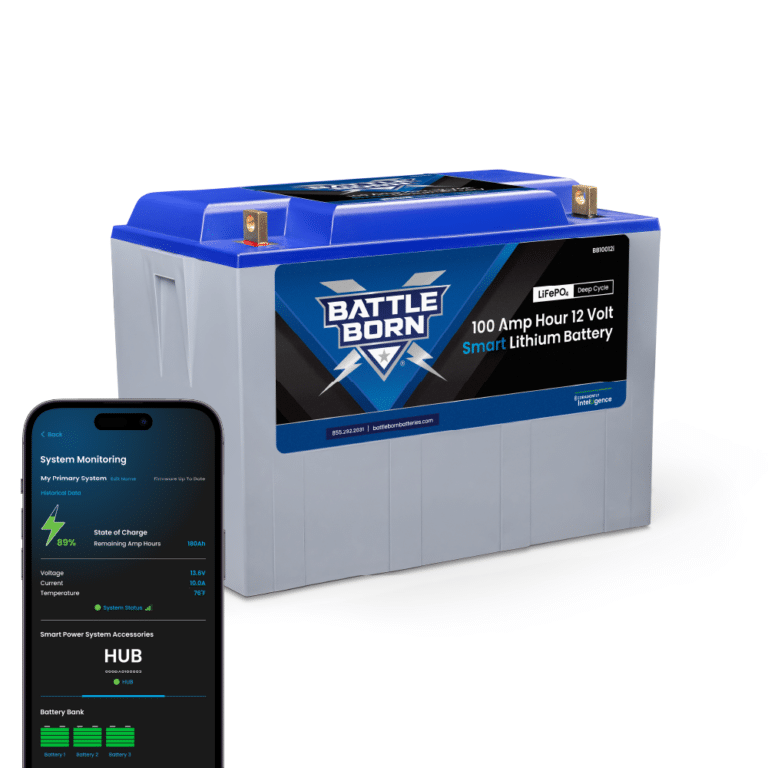

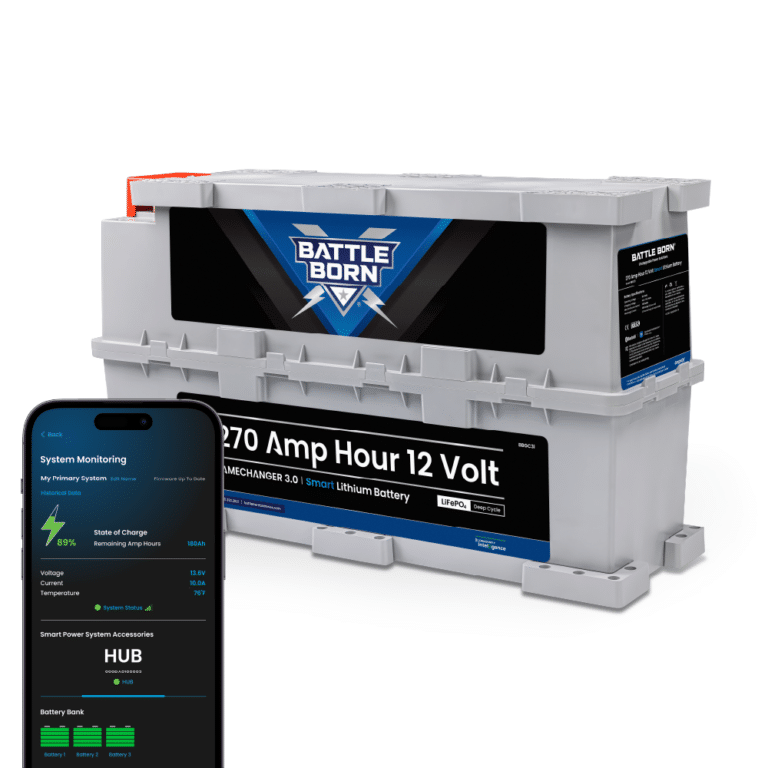




Ask a technical specialist now at 855.292.2831
Stay in the Know